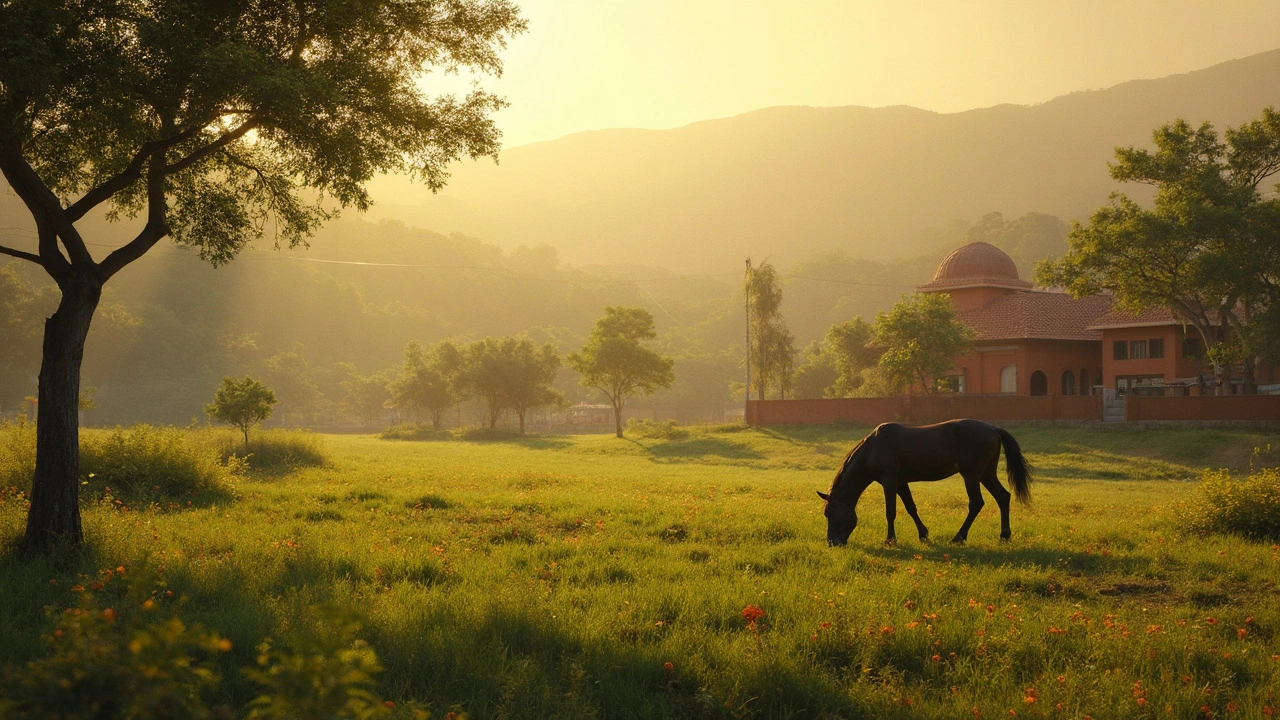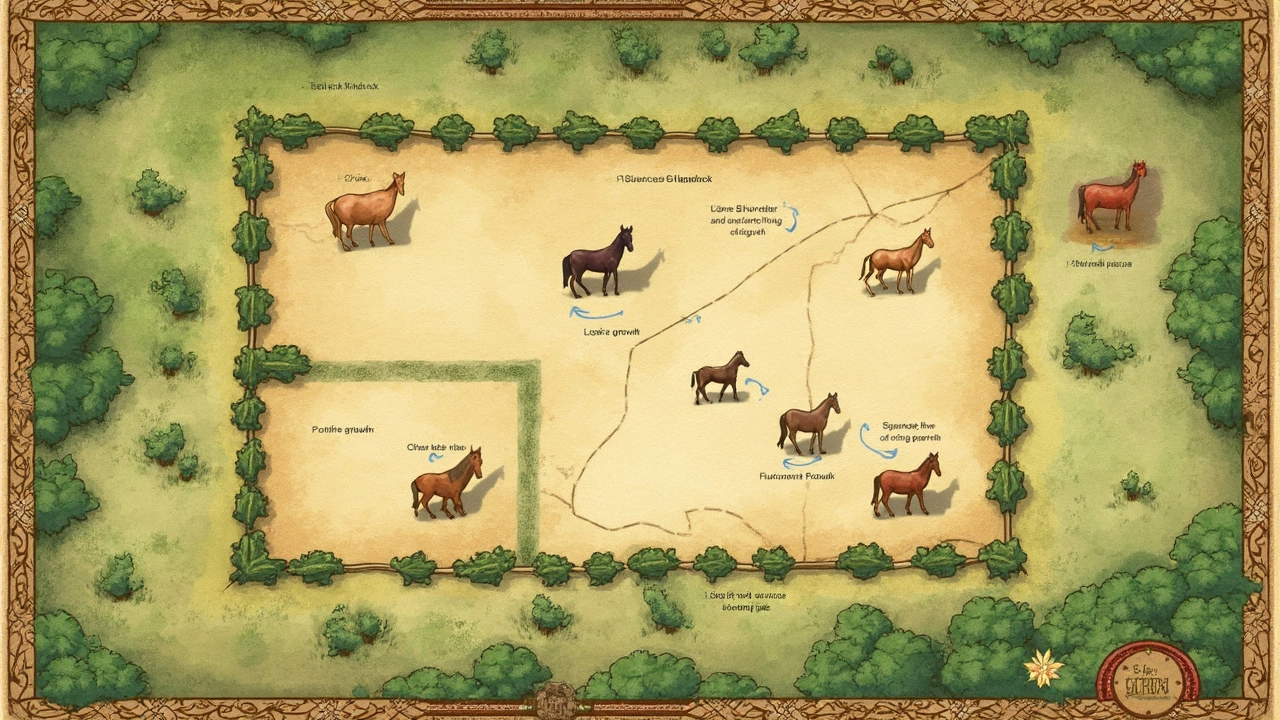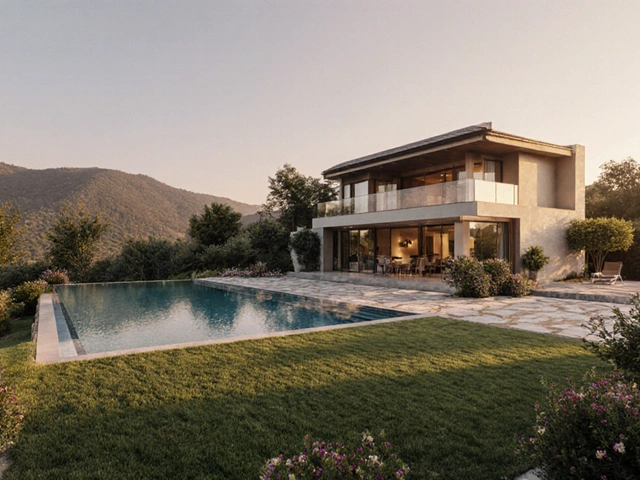How Many Acres Do You Need for a Horse? Real-Life Land Tips

The first thing I learned when researching horse properties for myself? That old “one acre per horse” rule everyone mentions—is actually just a starting point. Horses eat more than you'd think, especially those chunky ones who think every blade of grass belongs to them. So, figuring out how much land you need isn’t as simple as one acre and done.
It depends on the type of land you’re buying (lush pasture or dusty scrub?), what you want for your horse—grazing, space to run, a shelter—and how much time you want to spend feeding hay when the grass runs low. People looking at villas with land for sale often underestimate how quickly a single horse can turn a nice field into bare dirt. That’s where knowing real numbers, not guesses, can save a ton of hassle—not to mention money on extra hay and repairs down the line.
- The One-Acre Myth (and What Really Works)
- Grazing, Exercise Space, and Shelter Needs
- Location Matters: Regional Rules and Surprises
- Buying Smart: Land Tips for Long-Term Horse Care
The One-Acre Myth (and What Really Works)
You’ll hear it everywhere: “One acre per horse and you’re set.” But if you talk to real horse owners or dig into property listings, you’ll see that’s just a rule of thumb, not a guarantee. So many things affect how much land you actually need—soil quality, pasture health, climate, and even how much time your horse will spend on grass versus in a stable. It’s a lot more than just doing quick math.
If you have rich, well-kept pasture, yes, one to two acres can work for one horse. But if you’re starting with tired ground or you live in a drier spot, you’ll need more. Horses love to graze, but they can strip a field before you know it. Pasture rotation is the real secret—splitting your land into a few smaller paddocks so you’re never letting one area get overgrazed. Giving grass a break keeps it alive and saves you from shelling out for loads of hay.
Here’s a quick look at what experienced owners and land agents recommend:
- Horse acreage advice: Aim for at least 1.5 to 2 acres per horse for healthy grazing, more if your fields are less than perfect.
- If you want to keep more than two horses, it’s smart to add one extra acre for each one you add to the herd.
- Poor soils and dry regions? Double the space or budget for regular hay deliveries.
Check out this table summarizing typical acreage guidelines for backyard horse setups:
| Number of Horses | Pasture Condition | Recommended Acres |
|---|---|---|
| 1 | Rich/Lush | 1.5–2 |
| 1 | Poor/Dry | 2.5–3+ |
| 2 | Rich/Lush | 2.5–3 |
| 2 | Poor/Dry | 4–5 |
So, ignore random internet estimates and look closely at the property condition—never settle for a catchy acreage rule if you care about your horse’s health. Thinking ahead saves time, money, and a whole lot of stress (trust me, I’ve been there).
Grazing, Exercise Space, and Shelter Needs
Let’s get real about why just knowing the acres isn’t enough. Horses eat a ton—literally. A healthy adult horse can munch through about 20 pounds of forage every single day. Grazing is awesome for their health and happiness, but unless your pasture is top-notch, you simply can’t rely on grass alone most of the year.
Pasture quality makes a huge difference. Rich, well-managed grassland provides way more nutrition than weedy or worn-out ground. If you’re looking at horse acreage for a property, you really want 1.5 to 2 acres per horse for steady grazing, even on decent grass. Got sandy, dry land? You’ll need closer to 3 acres per horse. Plan to rotate pastures if possible so the grass can bounce back—otherwise your dream field turns into a muddy lot.
- Good pasture: About 2 acres per horse, with grass tall enough to cut for hay.
- Poor pasture: 3 acres or more per horse—or rely more on hay.
- Dry lot: Even a small paddock (as little as 400 sq ft per horse) is fine if you handle all feeding, but you’ll buy lots of hay and your horse won’t be as happy.
Exercise space is the next biggie. Horses don’t just need to graze—they actually want to move. An open field is ideal for running and playing, but not everyone gets that luxury. The rule of thumb: the bigger, the better. A small horse-safe paddock lets them let off steam when the pasture is muddy or under repair. If you’re aiming to build an arena for riding or training, count on at least 60x100 feet for a simple setup.
And don’t ignore shelter. Horses need shade and protection from wind and rain even in mild climates. A basic run-in shed—just three sides and a roof—works in most cases. You’ll also need somewhere to store hay and keep tack dry. Factor this into your land planning because these structures take up space and might change how your acreage is split up for turnout.
| Pasture Type | Recommended Acres per Horse |
|---|---|
| Rich/Managed Grass | 1.5 – 2 |
| Poor/Overgrazed | 3+ |
| Dry Lot (No Grazing) | 0.01 – 0.05 (plus feed) |
Bottom line: good grazing, real space to move, and simple shelter are what keep both you and your horse sane. Don’t cut corners here. Horses are happier, safer, and cheaper to keep if you get these basics right from day one.

Location Matters: Regional Rules and Surprises
Your neighbor in Kentucky might brag about running five horses on ten green acres, but try that in Texas and you'll end up with cranky, hungry animals. Climate and soil make a huge difference in how much land you actually need for a horse property. In rainy states like Oregon and Vermont, pastures stay green most of the year, so one or two acres per horse is realistic. Swing down to Arizona or anywhere with dry seasons, and those same acres barely stretch far enough for a single horse unless you want to buy hay year-round.
And it’s not just about grass. Local county codes throw in their own surprises. Certain places in California require special setbacks from water sources and neighbor fences, while in rural Georgia, you might need permits to build shelters or run fencing. Some towns even cap how many horses you can keep based on property size. Trust me, it pays to call both city hall and county offices before signing anything.
- Horse acreage isn’t a one-size-fits-all deal—zoning laws can force you to double or triple the space you thought you needed.
- Make sure to factor in flooding risks if you’re buying in lowland or hurricane-prone areas. You don’t want to wake up to a swampy paddock after one big storm.
- If water is scarce (hello, west Texas), you’ll need more land, or be ready to haul in hay and refill troughs constantly.
Here’s a quick look at how horse acreage stacks up by region:
| Region | Recommended Acres/Horse | Quick Note |
|---|---|---|
| Northeast (PA, NY, VT) | 1–2 acres | Plentiful rainfall and good pasture |
| Southwest (AZ, NM, TX) | 2–10+ acres | Dry, sparse grass, need extra space |
| Midwest (IL, WI, MN) | 1–3 acres | Mix of good pasture and cold winters |
| California | 3–5 acres | Varies by county; watch for strict zoning |
So before you commit to that villa with the "perfect" paddock, double-check the local rules and walk the property after a rainstorm. What works in one state (or even one county) can be a total miss just a few miles down the road.
Buying Smart: Land Tips for Long-Term Horse Care
If you’re looking at villas for sale and want to keep horses happy for years, you’ve got to think long-term. Plenty of people get caught up by the initial space and pretty views, but there’s more to making sure your place works for both you and your horses over time.
First, dig into the zoning rules before you get too excited. Not every chunk of land will let you keep a horse, and some areas limit how many you can have, no matter how many acres you've bought. Double check for water rights and local restrictions, especially in states where hay and water aren’t cheap—these can mess with your plans faster than you’d believe.
Next up, consider what’s already set up on the property. A solid fence, well-placed barn, and some natural shelter from wind and sun save you tons of money and effort. If you’re eyeing raw land, factor in the true cost of building these—prices can surprise you. For example, running water lines just 100 yards from the house to a barn can set you back over $2,000 if you’re hiring help.
Don’t forget about how you’ll rotate pastures. Horses are rough on land. Overgrazed fields can turn into mud pits after the first rainy season, so splitting your pasture with fencing means you can give one side a break while the other grows back. Ideally, you want an extra acre or two just to play with this system, especially if you’re not planning to reseed or fertilize every year.
Think about mud management, too. Even small slopes will tell rainwater where to run, and you don’t want it collecting near your barn. Laying down gravel in high-traffic areas and planning out good drainage keeps hooves dry and healthy.
Here’s a quick comparison of some must-check features when weighing horse properties:
| Feature | Why It Matters |
|---|---|
| Well Water Supply | Horses drink 5-10 gallons/day each—check flow and reliability |
| Paddocks/Sacrifice Areas | Saves grass and keeps horses off soggy fields |
| Shelter | Reduces vet bills due to sun, wind, and rain exposure |
| Manure Management Plan | Keeps neighbors happy and horses healthy |
Most of all, if you plan to ride at home, map out where an arena might go. Flat, open spots don’t just fall from the sky—they’re a goldmine for horse owners. Making smart choices at the start means less fixing and fewer regrets down the road. And, as a bonus, when the time comes to sell your place, buyers looking for a true horse acreage setup will spot the difference.









Write a comment